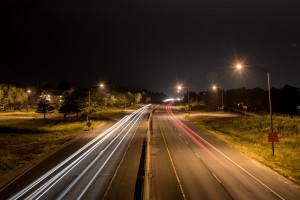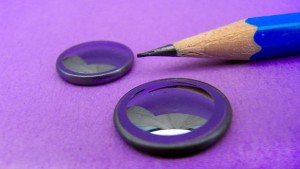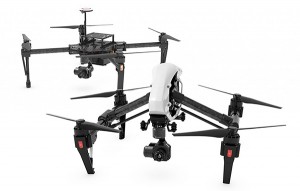What you read about Digital Infrared Lens Camera Conversion in the next few paragraphs may come as a surprise. I know when I first came across this idea of converting a camera to Infrared lens only, I was NOT convinced about its necessity nor its benefits.
In the dedicated Infrared lens digital camera conversion process the sensor filter that normally blocks the IR light (IR light in a regular visible light image is an unwanted intruder, and causes poor results in normal shooting conditions) is removed. This is replaced with a permanent opaque 87B or equivalent IR filter right over the sensor. The exact type of filter will depend on the make and model of your camera.
But more important than WHAT it is, is HOW you use a dedicated Infrared lens digital camera conversion like this. What if I were to tell you you’d be able to shoot fine IR images but no longer have to schlep your tripod everywhere, you wouldn’t have another filter to keep track of, you could actually see your composition in the view finder, you could use normal exposure times and shutter speeds, and you could shoot IR anytime, anywhere! Even of fast moving subjects like kids, people, and trees and plants on windy days? Well, now conversion makes it all possible.
And a bonus! Long exposure noise reduction is reduced with dedicated Infrared lens digital camera conversions; post production time reduced by half – or more! Are you starting to wonder, even just a bit – about whether or not this may be a good idea?
And did I mention the amazing image quality? Here are 2 100% crops of the same scene, the first taken with my original D70 and the Cokin 007 IR filter (89B equivalent – it’s the one I always use).
And the second taken with the new converted D70 from Lifepixel. I think you can see the difference quite plainly. I attribute this to the much faster exposure times for the converted camera, and that the sensor is capturing MORE IR light and less visible light.
Because of size constraints I can’t post the hi-res images here, but send me an e-mail and I’ll send you the full-size crops. the difference in quality is amazing. Digital “noise” is almost non-existent.
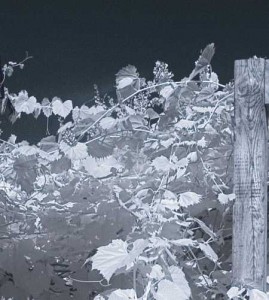
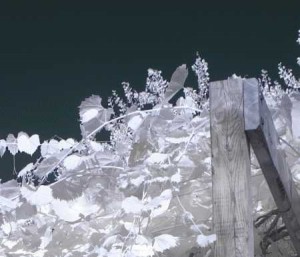
Let me explain some more: This is how a camera conversion liberates the creative mind. It frees you from the technical process and allows you to concentrate on only the creative matters. I can’t tell you the number of times I forgot to set the correct white balance when setting up my old D70 for an IR shoot. Or all the times I forgot my Cokin IR filter sitting on a stump or a park bench in between IR shots. Or all the times I went for a spur of the moment walk, with minimal gear only to regret not having my IR kit with me.
Now I can also use ALL my camera lenses too – especially the Nikon 10.5 mm fisheye – because there was no filter holder to fit it, I wasn’t able to use it at all for Infrared lens photography.
So I suppose I sold my self on the idea of going with a dedicated digital IR camera conversion. The practical me said that since I was winning awards, I could justify the additional cost. But the practical me also didn’t want to give up my beloved D70. You KNOW how much I love this camera!!!
What’s a girl to do!!!!??? Yep, the extravagant me bought another D70 and had it converted. I found a factory refurbished D70 on eBay from Cameta Cameras for cheap, and sent it off to Lifepixel in Washington before I had even unpacked it!
The converted dedicated digital IR D70 camera is FAST, sharp, and just a ton of fun. Vitaly and his staff at Lifepixel are very accessible and took the time to answer all my questions – and believe me I had lots! I did quite a bit of research on the company before making the jump, and all the forums (Nikonians, dpreview etc.) all had nothing but positive feedback about them. That and the willingness of the staff there to communicate sold me.
Update: Lifepixel now has a number of different types of Infrared lens Filters available for your camera conversions. From super color Infrared lens to extreme visible light blocking filters, they have really progressed. HOWEVER, there is no need to get super fancy with your Infrared lens camera conversion – keep your options open for the most diverse range of Infrared lens imagery that you can shoot.
If you get locked into the super colour filter, for example it may preclude you from doing other styles of IR shooting. I am sticking to the original R72 equivalent filter – I can easily post process to get super color or perfect Infrared lens black and white photos.
Take a look at my jam-packed tutorial book for Infrared lens post processing if you really want to learn how to expand your Infrared lens shooting repertoire.
There are other conversion shops on the Internet as well as Lifepixel, but their approach seemed a bit extreme – like using IT to see through people’s clothing!!! Yikes. (And it’s not even exactly true either!!!)
Take a look at the first digital Infrared lens images images from this uber cool Infrared lens camera – nothing too artistic but they are tack sharp, easy to manipulate in Photoshop because they have very little noise and all are 100% hand-held!
This article comes from nature-photography-central edit released


